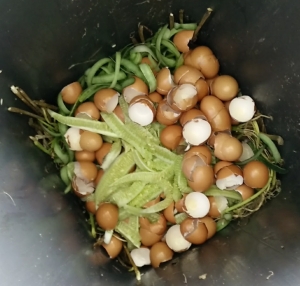Farewell my garden. You are unlike any of the gardens I have shaped. In terms of money, barely any was spent on you. You were made of waste, scavenged together. You ignited from three bags of composted food waste – a friend’s contribution. Plants grew from seeds of eaten fruits. Plant cuttings taken fondly from families, friends and around the neighbourhood. The fertility came from our kitchen scraps, dried leaves the landscapers swept up, logs from pruned roadside trees, and pee. Even water, none of it came straight from the tap. Aside from rain, I spoiled you with flavoured water: mop water, shower water, rice water. Don’t feel upset, I did splurge on you once; I burst a pipe while digging in a garden for heliconia rhizomes, and had to pay for a plumber.
In terms of time, I was in no rush. There was no client, no remuneration, and no deadlines. As such, you were nurtured more than manufactured. I realized my zeal for gardening one day, when I came home to tend to you after a full day of paid gardening work, while my toddler waits impatiently by the gate in her blue swimming suit.

Before it all. Yellowing grass with bald patches.
So, thank you my garden, for being a small haven I could escape to, whenever living in this sprawling, car-centered city became unbearable and frustrating. You shielded me from the nakedness of modern ‘open living’, and I could live freely at home with windows wide open. Continue reading



